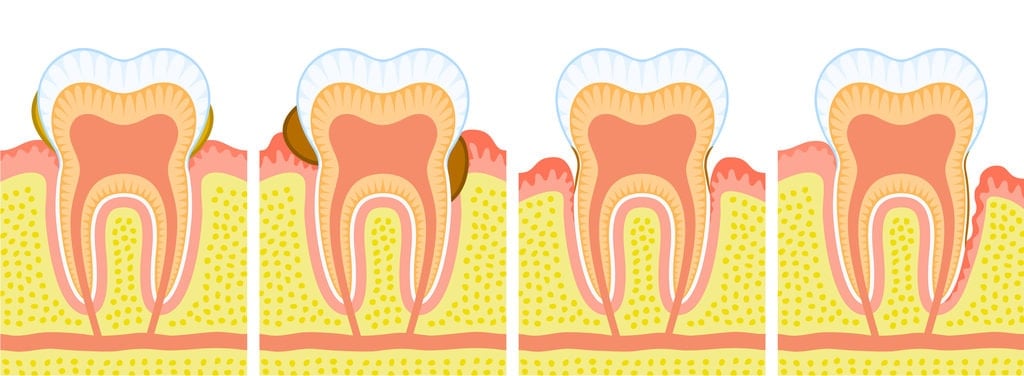Gum disease, or periodontitis, is the inflammation of the gums and the supporting structures of your teeth. Its starting point is through bacterial growth in your mouth.
Left untreated, it can cause the destruction of surrounding tissue, which may then lead to the loss of one or more teeth. The condition might only affect some of your teeth. Here, we'll examine the key symptoms to look out for, a series of possible causes, and the treatment that needs to be undertaken where periodontitis is found to be present.
Gum disease symptoms
Like many diseases, periodontitis can begin painlessly, and any warning signs are often not immediately obvious. In fact, in the initial stages, they can often be quite subtle. Here are seven questions to ask of yourself, which can help with early detection:
1. Are my gums red, tender, swollen, or do they seem to be receding?
2. Do I have a bad taste lingering in my mouth?
3. Am I subject to regular bouts of bad breath?
4. Do my gums bleed after I've used my toothbrush?
5. Do any of my teeth feel slightly loose, almost as if they are shifting their position slightly?
6. Have I noticed any deep pockets forming between my teeth and gums?
7. Does my bite feel different to normal?
If you have partial dentures, you might also notice a difference in how they sit in your mouth. Answering 'yes' to any of the above questions would make a visit to your dentist for a check up a sensible idea.
Underlying causes of gum disease
The symptoms covered above are the obvious evidence of gum disease to look out for. Underlying those visible clues can be a range of different symptoms. If any of these are present, they can be a further indicator towards periodontitis.
Hormonal changes, from puberty to pregnancy, or during menstruation or the menopause, can increase oral sensitivity and be a contributing factor. A range of illnesses, such as HIV or cancer, can interfere with the immune system. Diabetes, with its effect on blood sugar use, can also increase the risk of infection.
Lifestyle choices, such as smoking, a lack of proper oral hygiene, or even a family history of gum disease, can all have their effect. So can some medications which reduce the flow of saliva in the mouth. Apart from all these considerations, the formation of plaque is recognised as the primary precursor of gum disease.

Treatment options for gum disease
By talking these through with your dentist, you'll discover that treatment options for gum disease range from therapies to control the growth of bacteria, right through to restorative supportive tissue surgery. The aim, in such cases, is to reduce any swelling and the depths of pockets, counter the risk of the disease progressing, and prevent infections.
Like many illnesses and diseases, early diagnosis greatly increases the treatment possibilities for periodontitis. While the disease can be stopped through treatment, it's also vital to continue monitoring the situation through regular dental check-ups.
Our earlier list of symptoms will also help you to appreciate that making changes to poor dental hygiene practices will be a key part of both dealing with, and preventing, periodontitis.






